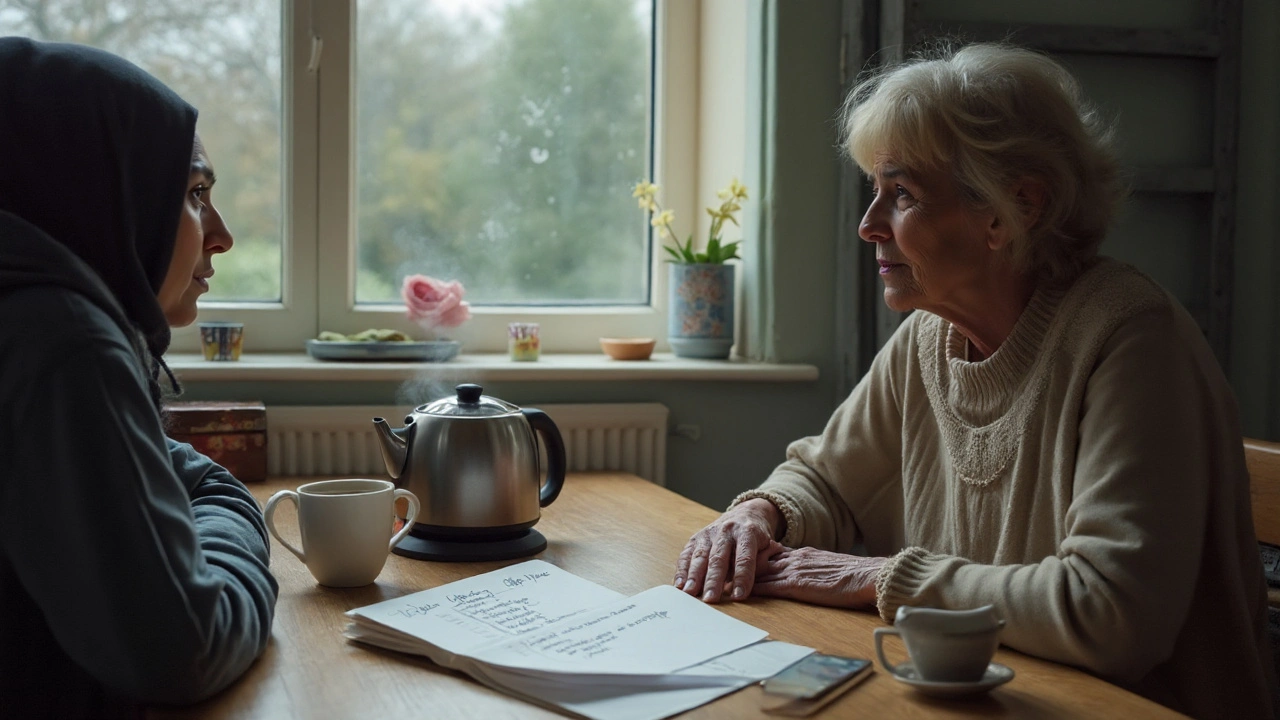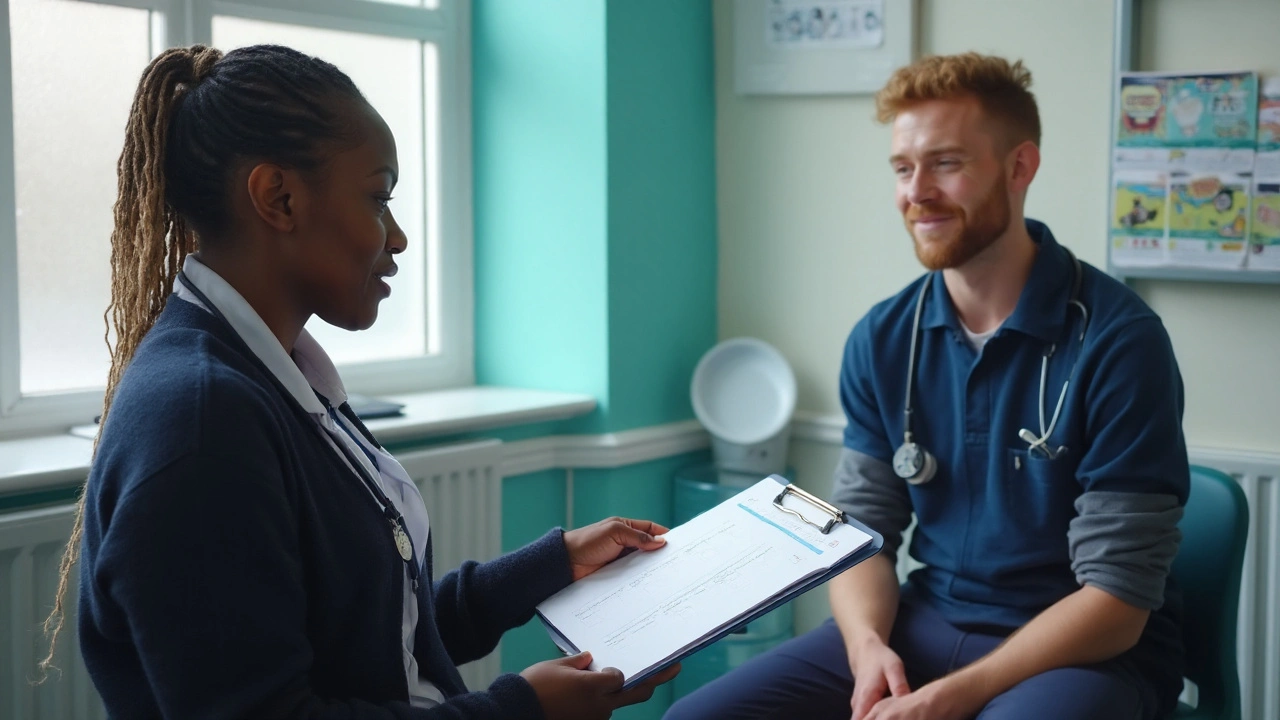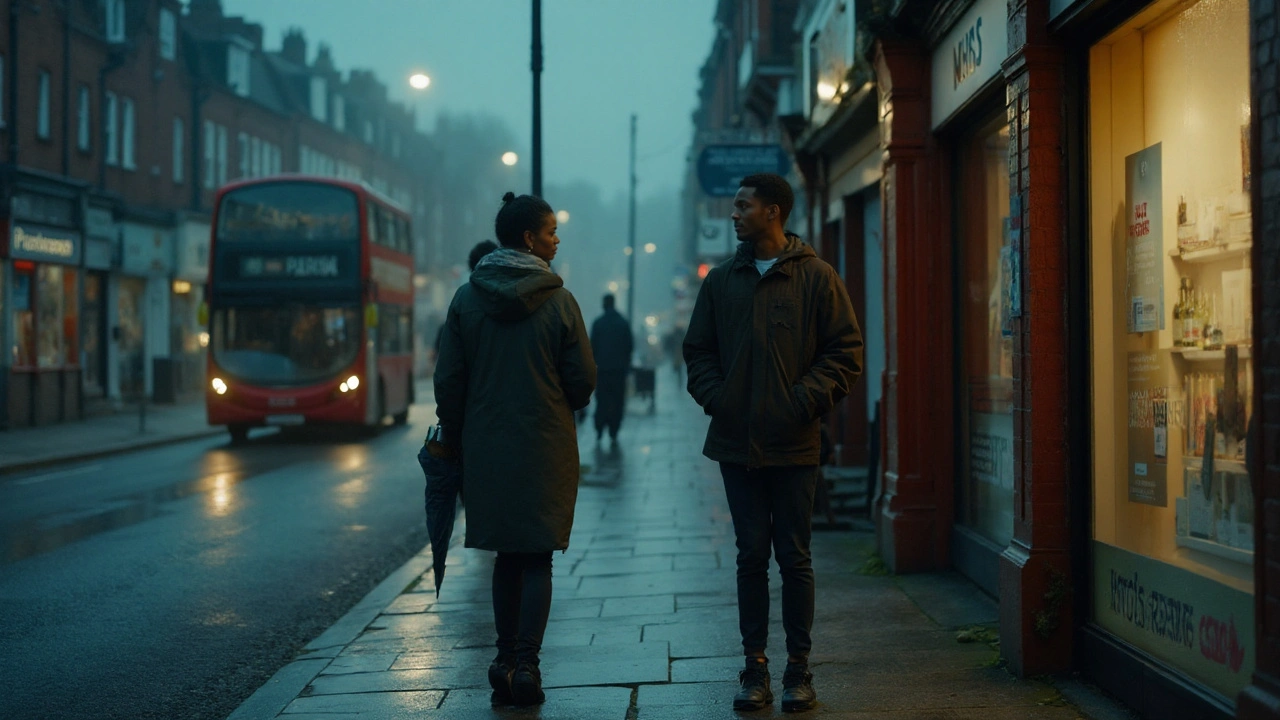Most people don’t avoid help because they love substances. They avoid help because myths make them feel broken, dangerous, or hopeless. If you’ve heard that dependence is a choice, that relapse equals failure, or that medication is “just another addiction,” this guide clears the fog and shows what actually helps. I’m writing from Edinburgh, where stigma still silences smart, good people. This piece sticks to evidence, gives you simple tools, and sets realistic expectations. No scare stories. No miracle cures. Just what works.
Myths About Drug Dependence: TL;DR and What the Evidence Says
- Dependence is a health condition, not a moral failing. It’s shaped by genes, stress, trauma, and environment-not just willpower.
- Cravings and relapse are common and treatable. They don’t mean treatment failed. They mean treatment should adapt.
- Medications like methadone, buprenorphine, and naltrexone reduce deaths and support real recovery. That’s not “substituting one drug for another.”
- People recover every day, with and without abstinence. Recovery can include harm reduction, stabilising on medication, or total sobriety.
- Shame and punishment make outcomes worse. Compassion, structure, and evidence-based care make them better.
Before we bust myths, a quick map: “Dependence” refers to the body adapting to a drug-tolerance and withdrawal. “Addiction” (often called a substance use disorder) includes lost control, compulsive use, and harm. You can be dependent on a medication without addiction (e.g., prescribed opioids for pain over time). And you can struggle with addiction without classic withdrawal, depending on the substance and pattern.
Now the myths people whisper-and what the data and clinical practice show.
- Myth 1: It’s a choice-just stop. Willpower helps, but biology and context matter. Genetic factors can explain roughly 40-60% of risk. Trauma, poverty, chronic pain, and mental health issues raise risk. You can’t “choose” your genes or early life stress, but you can choose treatment and safer routines.
- Myth 2: You must hit rock bottom. People do better when they get help early. Waiting for catastrophe increases overdose, infections, debt, and lost jobs. If your gut says something’s off, that’s enough reason to act.
- Myth 3: Relapse means failure. Many chronic conditions flare. Think asthma, diabetes, depression. A lapse is a signal to adjust the plan, not a verdict. Programs that plan for relapse-craving cues, travel, parties-see better long‑term results.
- Myth 4: Medication is swapping one drug for another. The point of methadone or buprenorphine is stability, not a buzz. These meds cut mortality risk, reduce illicit use, and help people hold jobs. Naltrexone blocks opioid effects and can prevent relapse. Data on this isn’t soft-randomised trials and national cohorts back it.
- Myth 5: Detox cures addiction. Detox handles withdrawal. That’s step zero. Without follow‑up treatment-meds, therapy, social support-overdose risk can go up because tolerance drops.
- Myth 6: Tough love works best. Boundaries matter, yes. But humiliation and punishment push people away from help. Motivational interviewing, contingency management, and supportive boundaries help people change without breaking trust.
- Myth 7: Cannabis or prescription meds can’t be addictive. Any drug that changes brain reward can prompt dependence for some users. Risk varies by dose, frequency, age of first use, and vulnerability.
- Myth 8: If someone holds a job, they can’t be dependent. Plenty of people keep up appearances while struggling-especially with alcohol, stimulants, or prescription sedatives. Functioning doesn’t mean healthy.
- Myth 9: Rehab is the only real treatment. Many recover with outpatient care plus meds, therapy, peer groups, and lifestyle tweaks. Inpatient is right for some (safety, medical need), but not the gold standard for everyone.
- Myth 10: Once dependent, always dependent. People change. Neuroplasticity is real. With time and support, the brain’s stress and reward systems calm down. Many reach a stable, healthy life.
"Substance use disorders are preventable and treatable health conditions. Recovery is possible for everyone." - World Health Organization
Why does this matter now? In 2025, we have stronger evidence than ever for medication-assisted treatment, peer recovery support, and harm reduction. In Scotland and across the UK, services are leaning harder into practical help-safer-supply discussions, naloxone distribution, and housing support-because these save lives while people work on change. If you’ve been told there’s only one “right” way, you’ve been sold a myth.

How to Replace Myths with Facts: Steps, Examples, and Checklists
Here’s a simple playbook you can use today-for yourself, for a friend, or for your team. No special software. Just a few clear moves.
Step 1: Fact‑check the claim in 10 minutes.
- Write the claim bluntly. Example: “Medication is just swapping one drug for another.”
- Check two primary sources: NHS guidance and a major public health body (NICE, WHO, or NIDA). Find the plain‑language sections.
- Look for: outcomes (death rates, relapse rates), side‑effects, and who benefits most.
- If claims hinge on shame (“weakness,” “moral failure”), bump your scepticism. Evidence speaks in outcomes, not insults.
Step 2: Use a harm‑reduction lens, even if abstinence is your goal.
- Carry or access naloxone if opioids are in the picture. It reverses overdoses.
- Don’t use alone. Set up a check‑in buddy or use supervised consumption where available.
- Test small first, especially after a break-tolerance drops fast.
- For alcohol: set drink limits, alternate with water, keep at least two alcohol‑free days a week.
- For stimulants: sleep, nutrition, and hydration cut crash‑use cycles; watch for heart strain.
Step 3: Pick a first‑line treatment based on fit, not myth.
- Opioids: consider methadone or buprenorphine; naltrexone as an option after detox if it fits your pattern and goals.
- Alcohol: acamprosate or naltrexone can reduce cravings; disulfiram is for specific scenarios with strong supervision.
- Stimulants: contingency management has strong evidence; some centres combine it with bupropion or other off‑label supports.
- Therapies: cognitive behavioural therapy (CBT), motivational interviewing, and trauma‑informed care build skills and safety without shame.
Step 4: Build a relapse‑prevention plan you’ll actually use.
- List three top triggers (people, places, feelings). Put them on paper. Not in your head.
- Choose two fast exits for each trigger: a text to a peer, a walk, a meeting, music + breathing drill, a simple meal, or a shower.
- Schedule your week: sleep anchors, meals, movement, and one social thing that isn’t about using.
- Agree on a “lapse plan”: who you’ll tell, how you’ll adjust meds or appointments, and how you’ll clean up the next day.
Step 5: Make the conversation safe.
- Open with care, not accusation: “I’m worried about you because I care, and I’ve noticed X.”
- Ask permission to talk. People close up if they feel cornered.
- Offer choices, not commands: “Would you prefer a GP chat or a peer support meeting first?”
- Hold boundaries that protect your safety-money, lifts, house rules-without shaming language.
Quick examples to swap myth for method
- Myth: “He’s on methadone, so he’s still an addict.” Method: Track outcomes. Is he avoiding street opioids? Holding a job? Fewer hospital visits? That’s progress worth keeping.
- Myth: “She relapsed; rehab didn’t work.” Method: Ask what changed before the lapse-sleep, grief, money stress. Adjust meds, add contingency management, tighten the plan. Try again.
- Myth: “Cold turkey proves you’re serious.” Method: For some drugs, abrupt stopping is risky (alcohol, benzodiazepines). A supervised taper is safer and more likely to stick.
Checklists you can use today
Signs you might be moving from use to dependence
- Need more to get the same effect (tolerance)
- Feel unwell when you stop or delay (withdrawal)
- Use more or longer than planned
- Cut back on work, study, or family time
- Keep using despite sleep, mood, or money problems
- Spend lots of time getting, using, and recovering
Talk-to-someone cheat sheet
- Pick a calm time and private place
- Use “I” statements, not blame
- Offer two concrete options (GP, local service, peer group)
- Agree on a small next step within 48 hours
- Follow up once; don’t nag daily
Service quality checklist (for UK/Scotland)
- Offers medication where appropriate (not abstinence‑only)
- Trauma‑informed and non‑judgemental staff
- Peer support options
- Relapse planning and harm‑reduction supplies (including naloxone)
- Clear pathways to mental health and housing support
Rules of thumb
- If it promises a cure in 7 days, it’s marketing, not medicine.
- If a program bans medication on principle, be cautious.
- If you can only keep progress by hiding the truth, it isn’t progress.
Decision mini‑tree
- If opioids are involved and overdoses are a risk: prioritise naloxone and consider methadone or buprenorphine. Add psychosocial support.
- If alcohol is the main issue and withdrawal is heavy: get medical advice before stopping. Consider acamprosate or naltrexone plus therapy.
- If stimulants drive binges: ask about contingency management and sleep/meal routines; consider medications where available and appropriate.
And a personal note from here in Edinburgh: plenty of bright, stubborn, loving people are alive because they said yes to a medication they once swore they’d never take, or to a peer group they thought wasn’t “for them.” Pride is powerful. So is staying alive long enough for life to get good again.

Quick Answers, Next Steps, and Troubleshooting Different Scenarios
Mini‑FAQ
- Is dependence different from addiction? Yes. Dependence is the body adapting (tolerance/withdrawal). Addiction includes loss of control and ongoing harm.
- Can you recover without going abstinent? Many people stabilise with reduced use or with medication that blocks cravings. Some then choose abstinence; others don’t. The test is quality of life and safety.
- Do “natural” detoxes work? Some ease symptoms, but they don’t change long‑term risk by themselves. Lasting change needs a plan-meds, therapy, routine, support.
- How long should treatment last? As long as it’s helping. Many do best with months to years of support that tapers as life stabilises.
- Is it true that relapse happens to everyone? Not everyone, but it’s common. Planning for it is smart, not cynical.
- What about teens and young adults? Early action matters. Family‑based approaches and peer support help. Keep messages clear and warm, not scary and shaming.
- Are online or telehealth options legit? Increasingly, yes-especially for counselling and medication reviews. Check that providers follow national guidelines and offer proper monitoring.
Evidence snapshots you can trust
- NHS and NICE guidance back medication‑assisted treatment for opioids and alcohol where appropriate.
- Public health data show methadone and buprenorphine cut overdose deaths and improve retention.
- Contingency management has strong results for stimulants and is being expanded in more services.
Next steps by scenario
If you’re worried about yourself
- Book a GP appointment and say the word “dependence” so you get the right pathway.
- Ask specifically about methadone/buprenorphine for opioids, or acamprosate/naltrexone for alcohol if those fit your situation.
- Pick one peer support option to try this week (mutual‑aid or a lived‑experience group).
- Build a 7‑day routine: bedtime, breakfast, movement, one social contact, and a craving plan.
- Store naloxone if there’s any opioid risk.
If you’re a parent or partner
- Prepare one caring message and one boundary. Example: “I’ll help you get to appointments. I won’t give cash.”
- Offer two choices for help. Choice reduces resistance.
- Keep valuables and medicines secure; remove shame from the conversation.
- Look after yourself-support groups help families too.
If you’re a manager or HR lead
- Use a health‑first policy with clear, confidential referrals to support.
- Offer flexible scheduling for appointments during treatment starts.
- Focus on safety and performance, not moral judgments.
- Train line managers in compassionate conversations and relapse planning.
If you’re a student
- Talk to campus wellbeing or your GP. Ask for brief interventions and clear signposting.
- Swap late‑night binge routines for small social anchors-study groups, sport, music.
- Set app limits and sleep reminders; sleep is relapse‑protection you can’t fake.
Troubleshooting common roadblocks
- “I can’t get an appointment for weeks.” Get on a cancellation list, ask for an interim prescription or support, and use peer groups in the meantime. Keep self‑care routine strict.
- “Medication makes me groggy.” Side‑effects often settle. Ask about dose timing or slow adjustments. Don’t quit suddenly without advice.
- “My family doesn’t believe in treatment.” Share plain‑language NHS guidance and outcomes. Invite them to a family session with a clinician.
- “I lapse on weekends.” Reshape Friday to Sunday: early plans, safe friends, daylight, food, movement. Pre‑commit to a meeting or call. Keep your phone’s home screen as your lapse plan.
- “I feel ashamed.” Shame is common and fixable. Treat it like a symptom, not a sentence. Talk to someone who will not judge-GP, counsellor, or peer lead.
What success looks like
- Fewer crises and safer use right away
- Steadier sleep, food, and mood within weeks
- Re‑entering routines-work, study, or family time
- More honest conversations and fewer secrets
- A plan that adapts during stress, holidays, and big life events
When to seek urgent help
- Signs of severe withdrawal from alcohol or benzodiazepines (confusion, seizures)
- Risk of overdose or mixing opioids with other depressants
- Thoughts of self‑harm
- Pregnancy with ongoing substance use-needs tailored, non‑judgemental care
Credible voices to keep in your corner
- NHS/NHS Scotland for treatment pathways and medication guidance
- NICE for clinical guidelines
- World Health Organization for public health guidance
- National Institute on Drug Abuse for science summaries
- Royal College of Psychiatrists for clinician‑level info in plain language
Strip away the stories that shame you. Keep the facts and the people who care. A lot of us in Scotland and beyond are rooting for you. If you take only one thing from this piece, make it this: you don’t need to hit bottom to start. You just need a first step, and then another.
Use this article as a working sheet. Share it with someone you trust. And if a loud voice in your head still says, “It’s a choice, just stop”-remember that the human brain is clever, adaptable, and stubborn. So are you. That’s exactly why persistence beats myths.
Here’s your 24‑hour starter plan:
- Tell one trusted person what you want to change.
- Book one appointment (GP or local support service).
- Set up a craving plan on your phone: three exits you’ll try first.
- Eat, hydrate, and sleep. Basics power willpower.
- If opioids are in the mix, get naloxone in reach.
Myth‑busting isn’t abstract. It’s practical. It saves lives, protects families, and gives you your energy back. Start with the biggest myth you carry, name it out loud, and replace it with one stubborn fact. Then move.
One last reminder for searchers skimming this page: drug dependence myths survive because they sound simple. Real help is simple too, but it’s not simplistic. It’s patient, specific, and kind. That’s the difference.


